‘OK,’ says the pilot over the speakers. ‘Visibility on the ground is currently less than 100m, so we’re going to wait a little while.’
As the seatbelt sign pings – again – the plane begins to tilt gently, circling over a small group of islands currently hidden below many, many layers of thick clouds.
This is how we arrive into the Faroe Islands. Although we make it to terra firma in the end, it’s now much clearer why they say the flight out here to the North Atlantic is reserved only for pilots who really know what they’re doing.
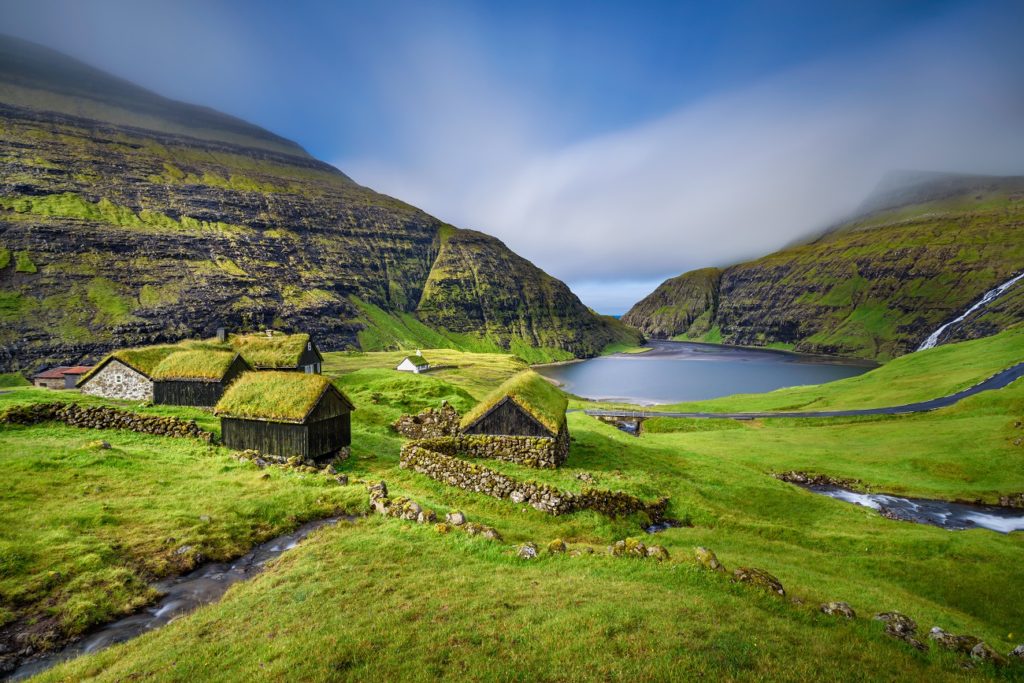
The Faroes are becoming increasingly prominent in the minds of travellers, but many people still have no idea what or where they are. In brief, the 18-strong archipelago is an autonomous country within the Kingdom of Denmark, scattered across the North Atlantic roughly halfway between Iceland and Scotland, with a population of 50,000 people and 70,000 sheep, or thereabouts.
This is a world of superlatives, where staggering, dramatic cliffs and mountains stand in stark contrast to the treeless, sheep-dotted fields that bloom into impossible greenness in the summer months. Picturesque turf-roofed houses cluster on the edges of deep Atlantic waters, and driving here really can make you feel like every turn in the road brings upon some new, impossibly beautiful vista.
There are many ways to ‘do’ the Faroes – some people come for the weekend, others for weeks at a time. However long your stay, though, a trip to the archipelago is best approached with some degree of flexibility. The Faroese have a saying: ‘If you don’t like the weather, wait five minutes’. Conditions can certainly change fast – bright-blue skies can be overwhelmed by fog or rain in a matter of minutes, so keep these changeable conditions in mind when planning journeys.
To make the most of your time in the Faroes, we would recommend hiring a car. Although it’s easy enough to base yourself in Tórshavn and explore from there, we would suggest bedding down at a couple of hotels and B&Bs during your stay to really get a feel for the Faroese hospitality. To make the most of your trip, we’d recommend basing your stay around the following itinerary:
Days 1–2 – the Western Isles
From the airport, spend a couple of days exploring the westernmost islands of Streymoy, Vágar and Mykines. The islands are blessed with a good network of roads that link even the most remote village, meaning that getting around by car here is simple.
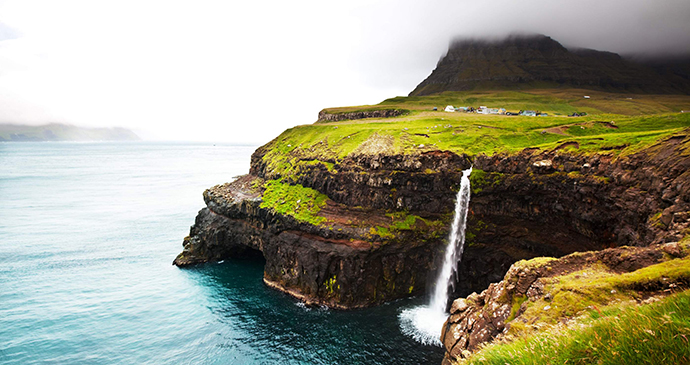
Highlights include the bird cliffs at Vestmanna, where seabirds like puffins, razorbills, guillemots and fulmars nest during the summer, as well as the iconic Múlafossur waterfall at Gásadalur, which drops from the cliff edge for 150m into the churning sea below.
You’ll find plenty of picturesque villages on the islands, too; our favourites include Kvívík, Tjørnuvík and Saksun. Those with more time on their hands will want to catch the ferry over to the small isle of Mykines – at barely 10km², it is certainly the most enigmatic of the islands and the one that ranks as the absolute favourite with visitors.
Day 3 – Eysturoy
Moving east, the next island you encounter is the archipleago’s second largest and most densely populated. The surrounding countryside is dominated by the country’s longest fjord, Skálafjørður, set against a dramatic backdrop of a trio of peaks that bear down on a scattering of pretty villages.
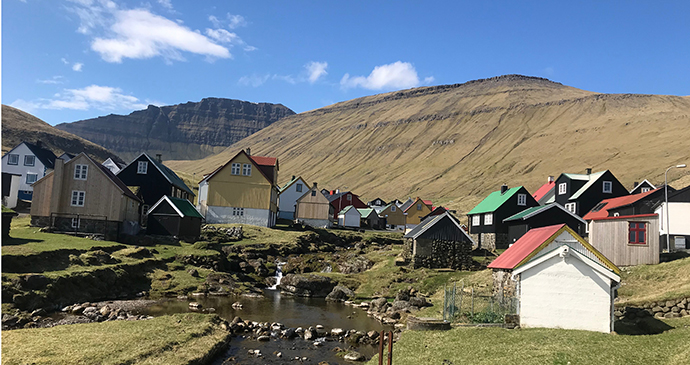
You could easily spend a day just driving around this remarkable scenery, but two points of interest on Eysturoy shouldn’t be missed: the settlement of Eiði, which stands in the shadow of the Faroes’ highest peak, Slættaratindur, and boasts plenty of hiking opportunities; and the gorgeous village of Gjógv, awash with turf-roofed houses and glorious views.
Days 4–5 – The northern isles
The six northern islands that form the northeastern extremity of the Faroes are arguably the country’s best-kept secret. These remote enigmatic islands, receive little attention, even within the Faroe Islands, but they are definitely worth at least a couple of days of your time.
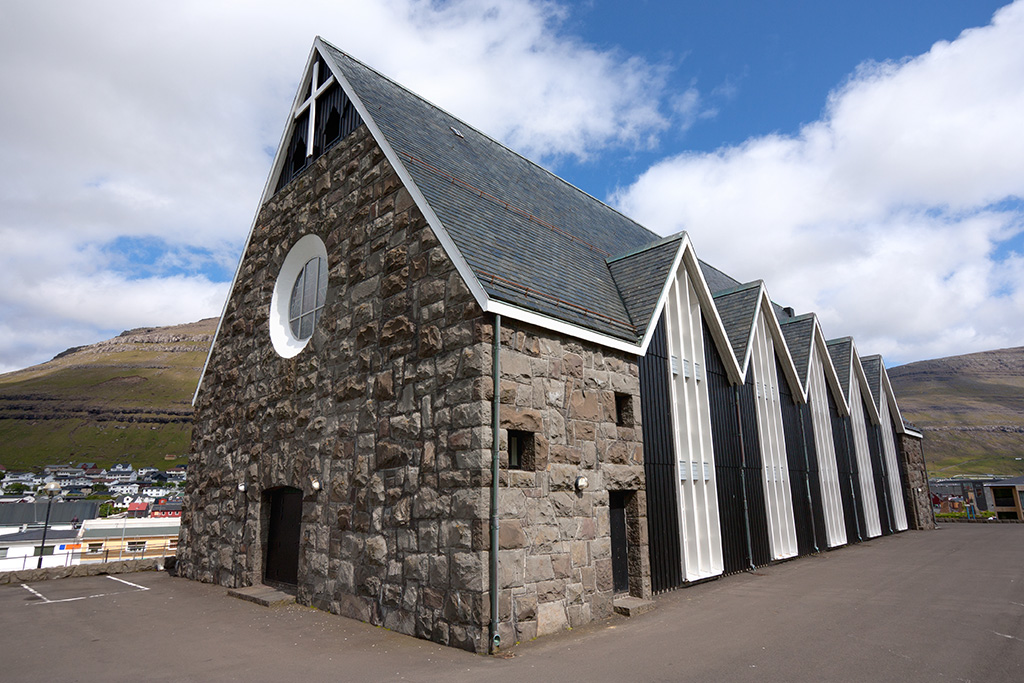
Make your base the town of Klaksvík on the island of Bordoy, home to the greatest choice of restaurants, shops and accommodation, as well one of the islands’ most beautiful churches at Christianskirkjan. From here, you’re perfectly placed to drive over to the island of Kunoy, with its fantastic walking trails, or hop on a ferry to little-visited Kalsoy, known for its many legends.
Days 6–7 – Tórshavn
Spend your last few days on the islands exploring the quaint and charming capital. In the morning, take a stroll along the harbourside and wander around the wooden houses of Tinganes – home to the old Faroese parliament – before spending the afternoon exploring the various art galleries and museums, including Nordic House – the most important cultural institution in the Faroes.
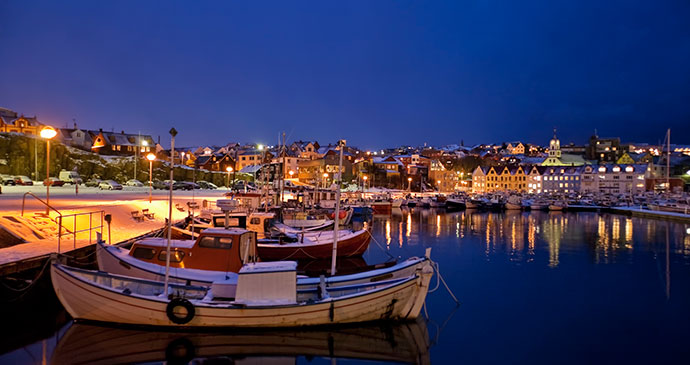
You’ll find plenty of excursions on offer from the capital, too – don’t miss out on a trip to medieval farmhouse Kirkjubøur, which has been worked by the same family in an unbroken line since 1557 and where you’ll likely be offered local schnapps, or a boat trip over to the quiet isle of Nolsoy.
Practicalities
Atlantic Airways run twice-weekly services from Edinburgh to Vagar (Mon & Thu), as well as regular flights from Copenhagen, Billund and Aalborg.
More information
Inspired to book a trip to this Danish island chain? Talk to our friends at Regent Holidays, or check out our comprehensive guide: